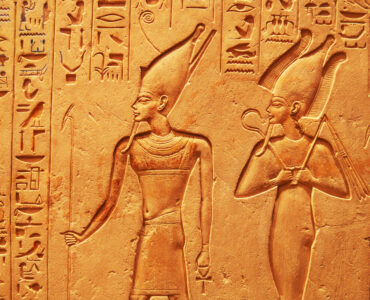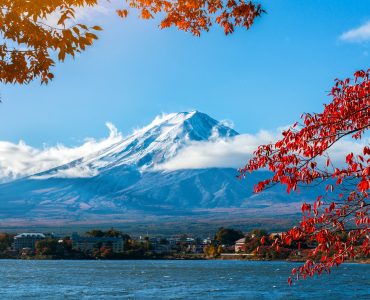-
Price $1299
-
Trip Small Group Guided Tour
-
Duration 9 days
-
Group size 10
-
Transport Tour Bus
Tour Code: FTGT08
- Small group size: 2-10
- Delhi 2 nights: Red Fort, Jamia Masjid, Qutub Minar, Humayun’s Tomb, Lotus Temple, India Gate
- Jaipur 2 nights: City Palace, Jantar-Mantar (Observatory), Albert Hall Museum, Hawa Mahal, Amer Fort, Jal Mahal
- Agra 1 night: Abhaneri,Taj Mahal & Agra Fort
- Small group tour min 2 people
Itinerary
On arrival at Delhi airport or railway station, our representative will meet you to pick you up and transfer to your hotel.
Rest of the day is at your leisure. Stay overnight at the hotel in Delhi.
Please note the check in time in India is always after 2pm.
Overnight Hotel: Hotel Crowne Plaza Rohini (or Similar)
After breakfast start s sightseeing tour of Delhi visit.
Red Fort: Delhi's most famous monument, the Red Fort, stands as a powerful reminder of the Mughal emperors who ruled India. Its walls, which stretch for over two kilometers (1.2 miles), were built in 1638 to keep out invaders. However, they failed to stop the fort being captured by the Sikhs and the British. To take your imagination back to the ancient era, a one hour sound and light show of the fort's history is held each evening.
Jama Masjid: Jama Masjid is another marvelous treasure of the Old City, and is the largest mosque in India. Its courtyard can hold an incredible 25,000 devotees. The mosque took 13 years to build, and was completed in 1650. A strenuous climb to the top of its southern tower will reward you with a stunning view across the rooftops of Delhi. Be sure to dress appropriately when visiting the mosque or you won't be allowed in. This means covering your head, legs and shoulders. Attire is available there.
The Chandni Chowk (Moonlight Square) is one of the oldest and busiest markets in Old Delhi, India. Chandni Chowk is located close to Old Delhi Railway Station. The Red Fort monument is located within the market. It was built in the 17th century by Mughal Emperor of India Shah Jahan and designed by his daughter Jahanara. The market was once divided by canals (now closed) to reflect moonlight and remains one of India's largest wholesale markets.
Spice Market: Khari Baoli is a street in Delhi, India known for its wholesale grocery and Asia's largest wholesale spice market selling all kinds of spices, nuts, herbs and food products like rice and tea. Operating since the 17th century, the market is situated near the historic Delhi Red Fort, on the Khari Baoli Road adjacent to Fatehpuri Masjid at the western end of the Chandni Chowk, and over the years has remained a tourist attraction, especially those in the heritage circuit of Old Delhi. Later back to Hotel, Stay Overnight at Hotel.
Meal(S): Breakfast
Overnight Hotel: Hotel Crown Plaza (or Similar)
After breakfast proceed to Jaipur. On arrival check in Hotel later start a sightseeing tour of Jaipur visit.
City Palace: situated in the heart of the old City, it occupies about one seventh of the old city area. The palace is a blend of Rajput and Mughal architecture, it houses a Seven storeyed Chandra Mahal in the centre, which affords a fine view of the gardens and the city. Diwan-E-Am (Hall of public audience) has intricate decorations and collection of manuscripts, Diwan-E-Khas (Hall of private audience) has a marble pawed gallery Mubarak Mahal has a rich collection of costumes and textiles. There is a Clock Tower near Mubarak Mahal. SilehKhana has a collection of armory and weapons.
JantarMantar: built in 18th century by Maharaja Sawai Jai Singh II, the huge masonary instruments were used to study the movement of constellations and stars in the sky. Enormous sun-dial still provides accurate time, which is subject to daily corrections.
HawaMahal:built in 1799, by Maharaja SawaiPratap Singh, is the most recognizable monument of Jaipur. The 5 storied stunning semi-octagonal monument having 152 windows with over hanging latticed balconies is a fine piece of Rajput architecture. Originally designed for the royal ladies to watch and enjoy the processions and other activities, on the street below. Now it houses a well laid out museum. The display “Jaipur past and present” is the special feature of this newly setup museum.
Albert Hall Museum: situated in the Ram Niwas Garden. This graceful building was founded in 1876 by Prince Albert (also known as Albert Hall). It has a rare collection of archaeological and handicraft pieces. Stay overnight at Hotel in Jaipur.
Meal(S): Breakfast
Overnight Hotel: Hotel Crown Plaza (or Similar)
Early morning after breakfast proceed to sightseeing tour of Jaipur Visit
Amer Fort:The old capital of the Kachhwahas stands atop a range of craggy hills. The fort is remarkable as much for the majestic grandeur of its surroundings as for its sturdy battlements and beautiful palaces. It is a fine blend of Hindu and Muslim architecture. The solemn dignity of it red sandstone and white marble pavilions, when reflected in the lake at the foot hill, is a sight to behold. The original palace was built by Raja Man Singh, the additional extensions were built by Maharaja Mirja Raja Jai Singh and Sawai Jai Singh lIthe last Maharaja of Amer, who built a new city called Jaipur, where he shfted his capital in 1727. The palace complex is lavishly ornamented and displays the riches of Amer. Sheesh Mahal chamber of Mirrors. Diwan-e-Am or the Hall of Public Audience is a beautifully proportioned hall open on three sides and stands on two rows of ornamented pillars. Diwan e-Khas or the Hall of Private Audience has delicate mosaic work in glass. Sukhmandir is guarded by sandalwood doors inlaid with ivory. Throughout the massive fort finely carved lattice windows, exquisitely painted doorways, halls and finely sculptured pillars crave for attention. The old city of Amer was the seat of power and bustling with life and prosperity. Other worth seeing sites are JagatShiromani Temple, Narsinghji temple, the stepwell of PannaMeena and fine carved royal cenotaphs on the road to Delhi.
JalMahal: On the way to Amer, this small palace is set in the middle of Man Sagar Lake. Renovation around the lake is in progress .
Stay overnight at hotel in Jaipur.
Meal(S): Breakfast
Overnight Hotel: Hotel Crown Plaza (or Similar)
After breakfast proceed to Agra en route visit.
FatehpurSikri:-Built by Akbar, the Mughal emperor in 1570, the city was a tribute to Sufi Saint. FatehpurSikri is a perfect blend of Indian, Islamic and Persian architecture and it was built using red sandstone. For around 10 years, the city remained the capital of Mughal Empire. The city has a 6-kilometer long wall on three sides and there are towers and gates. It houses some of the city’s important buildings namely BulandDarwaza, Birbal’s House, PanchMahal and Jama Masjid. The entire city along with all the important constructions including royal palaces, Jama Masjid and courts were declared as World.
Or either can visit to:
Abhaneri is a village in the Dausa district of Rajasthan state in India. It is situated at a distance of 95 km from Jaipur, on the Jaipur-Agra road. The place is popular for the Chand Baori step well and Harshat Mata Temple. Later proceed to Agra. On arrival check in Hotel.
Stay overnight at Hotel in Agra.
Meal(S): Breakfast
Overnight Hotel: Hotel Ramada Plaza (or Similar)
After breakfast start a sightseeing tour of Agra visit
Taj Mahal:-You cannot think of Agra without thinking of Taj Mahal. Or, you might not have thought of Agra were it not for the monument of love. TajMahal, the white marble beauty was constructed by Shah Jahan in memory of his beloved wife, Mumtaz Mahal. The monument stands proof for the brilliance of Mughal architecture. Named as one of the wonders of the world, Taj Mahal stands the test of time. It has been declared as World Heritage Site in the year 1983. It is a feast to your eyes and senses to watch the unmatched beauty on the night of full moon day. (*Taj Mahal Closed on every Friday)
Afternoon visit,
Agra Fort :-You would regret if you miss Agra Fort during your visit to Agra. The 16th century monument is yet another proof of the architectural brilliance of Mughals. This is situated near the gardens of the world famous TajMahal. Called the Red Fort of Agra, you will be awe inspired by the powerful fortress. The fortress comprises many palaces namely, Jahangir Palace, KhasMahal and so on. There are audience halls and two mosques. The entire fortress is a symbol of Mughal’s grandeur. It was in Agra Fort Shah Jahan was held prisoner by Aurangazeb, his son. Shah Jahan, the emperor, spent his last days here viewing the monument of love he had built for his wife. Evening proceed to Delhi.
On arrival check in Hotel stay overnight at Hotel in Delhi.
Meal(S): Breakfast
Overnight Hotel: Hotel Ramada Plaza (or Similar)
After break-fast start a New Delhi sightseeing.
Qutub Minar: QutabMinar, the tallest brick minaret in the world, is an incredible example of early Indo–Islamic architecture. It was built in 1206, but the reason remains a mystery. Some believe that it was made to signify victory and the beginning of Muslim rule in India, while others say it was used to call the faithful to prayer. The tower has five distinct stories, and is covered with intricate carvings and verses from the holy Quran. There are also a number of other historic monuments on the site.
Humayun’s Tomb: If you think Humayun's Tomb looks a bit like the TajMahal in Agra, that's because it was the inspiration for the TajMahal's creation. The tomb was built in 1570, and houses the body of the second Mughal emperor, Humayun. It was the first of this type of Mughal architecture to be built in India, and the Mughal rulers followed it up with an extensive period of construction all over the country. The tomb is part of a greater complex that's set amongst beautiful gardens.
Lotus Temple: The Bahai Temple is commonly referred to as the Lotus Temple, as it's shaped like a lotus flower. It's particularly pretty at night, when it's attractively lit up. Made out of white marble, the temple belongs to the Bahai Faith, which proclaims the unity of all people and religions. Everybody is welcome to worship there. The tranquil gardens and ponds surrounding the temple are also a great place for a relaxing picnic.
India Gate: The towering archway of India Gate at the center of New Delhi is a war memorial, built in memory of the Indian soldiers who lost their lives fighting for the British Army in World War I. At night it glows warmly under floodlights, and the gardens that line its boulevard are a popular place to enjoy a warm summer's evening.
The Laxminarayan Temple, also known as the Birla Mandir is a Hindu temple up to large extent dedicated to Laxminarayan in Delhi, India. Laxminarayan usually refers to Vishnu, Preserver in the Trimurti, also known as Narayan, when he is with his consort Lakshmi. The temple, inaugurated by Mahatma Gandhi, was built by Baldeo Das Birla and his sons (including Ghanshyam Das) from 1933 and 1939. The side temples are dedicated to Shiva, Krishna and Buddha.
Stay overnight at Hotel in Delhi.
Meal(S): Breakfast
Overnight Hotel: Hotel Crowne Plaza Rohini (or Similar)
In this day transfer to Airport for flight to your onward destination.
Meal(S): Breakfast
Departure City
Airport/Meeting Location:
Delhi International AirportEnd City
Airport/Meeting Location:
Delhi International AirportIncluded:
8 nights Hotel with Breakfast (see itinerary);
Professional English-speaking tour guide;
Air-conditioned sightseeing coach provided;
City-to-city transportation;
Sightseeing Tours in All Cities;
Monument fees-$95 per person;
Airport transfer-$25 per person;
Tips, laundry, telephone bills, luggage handling and Beverages;
India Visa;
Travel Insurance(Click to purchase)
FAQs
Book Now
Contact us
- New Delhi, Delhi 110037, India, India
- [email protected]
- 866-536-8299













